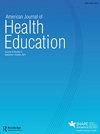提高心力衰竭康复病人健康行为改变教育教材之开发
IF 0.8
Q4 PUBLIC, ENVIRONMENTAL & OCCUPATIONAL HEALTH
引用次数: 0
摘要
背景:患者教育材料(PEMs)通常用于健康教育计划,以使患者能够自我管理他们的疾病,以获得更好的健康结果。心力衰竭(HF)患者需要更多关于自我管理的信息和易于理解的教育材料。以自我效能感为核心的项目已被证明对改善患者的自我管理是有效的。目的开发实用的、提高疗效的、量身定制的心衰康复材料,以满足客户的需求,推动长期的行为改变,并评估材料的质量(可读性、可理解性、可操作性和可接受性)。方法探索性混合方法研究包括:i)半结构化访谈;ii)评价pms;iii) pms的修订和重新评价;(四)出版。一个指定的专家小组评估内容的准确性、可理解性和可操作性。患者教育材料评估工具评估内容的可理解性和可操作性。使用Flesch Kincaid计算器评估内容可读性。使用教材可接受性工具评估客户的可接受性。结果新编制的PEMs具有良好的可理解性、可操作性、可读性和可接受性。以患者为中心的PEMs在患者中具有良好的接受度和满意度。然而,为行为改变量身定制的效能增强PEMs的有效性需要进一步评估。所有利益相关者都应参与到健康教育实践中来。本文通过SHAPE美国在线研究所(SAOI) http://portal.shapeamerica.org/trn-Webinars提供了一个AJHE自学测验本文章由计算机程序翻译,如有差异,请以英文原文为准。
Development of Efficacy-Enhanced Heart Failure Rehabilitation Patient Education Materials for Health Behavior Change
ABSTRACT Background Patient education materials (PEMs) are often used in health education programs to empower patients to self-manage their disease for better health outcomes. Heart failure (HF) patients wanted more information about self-management and educational materials that were easy to understand. Programs with self-efficacy as the core component have proven to be effective in improving patients’ self-management. Purpose To develop practical, efficacy-enhanced, tailored HF rehabilitation PEMs that satisfy our clients to drive long-lasting behavior change and evaluate the materials’ quality (readability, understandability, actionability, and acceptability). Methods Exploratory mixed methods study involving: i) semi-structured interviews; ii) evaluation of the PEMs; iii) revision and reevaluation of the PEMs; iv) publication. An appointed panel of experts evaluates content accuracy, understandability, and actionability. The Patient Education Material Assessment Tool assesses content understandability and actionability. The content readability was assessed using Flesch Kincaid Calculator. Clients’ acceptability was assessed using Educational Material Acceptability tool. Results The newly developed PEMs have good understandability, actionability, readability, and acceptance. Discussion Patient-centered PEMs have good acceptance and satisfaction among clients. However, the effectiveness of tailored efficacy-enhanced PEMs for behavior changes needs further evaluation. Translation to Health Education Practice All stakeholders should be included in developing PEMs. A AJHE Self-Study quiz is online for this article via the SHAPE America Online Institute (SAOI) http://portal.shapeamerica.org/trn-Webinars
求助全文
通过发布文献求助,成功后即可免费获取论文全文。
去求助
来源期刊

American Journal of Health Education
PUBLIC, ENVIRONMENTAL & OCCUPATIONAL HEALTH-
CiteScore
1.70
自引率
10.00%
发文量
36
期刊介绍:
AJHE is sponsored by the American Association for Health Education of the American Alliance for Health, Physical Education, Recreation and Dance. The mission of the American Association for Health Education(AAHE) is to advance the profession by serving health educators and others who strive to promote the health of all people through education and other systematic strategies.AAHE addresses the following priorities •Develop and promulgate standards, resources and services regarding health education to professionals and non-professionals •Foster the development of national research priorities in health education and promotion. Provide mechanisms for the translation and interaction between theory, research and practice.
 求助内容:
求助内容: 应助结果提醒方式:
应助结果提醒方式:


